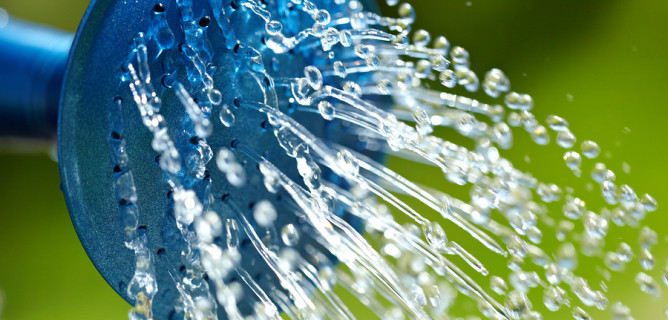 Many people are turning to Texas A&M’s AgriLife Extension Services because they are trying to reach the goal of keeping their lawns and landscaping attractive while avoiding high water bills and hours of maintenance. They offer a variety of education and how-to tips for simplifying landscaping and yard maintenance based on their research:
Many people are turning to Texas A&M’s AgriLife Extension Services because they are trying to reach the goal of keeping their lawns and landscaping attractive while avoiding high water bills and hours of maintenance. They offer a variety of education and how-to tips for simplifying landscaping and yard maintenance based on their research:
When maintaining a lawn or landscape, the main key should be watering habits.
Robert “Skip” Richter, county extension agent – horticulture, Texas A&M AgriLife Extension Services, Houston, says “Most people water inefficiently, and learning how to water correctly is important for water conservation and for lowering maintenance in our yards.”
He goes on to add that with the growing population, a strain has been put on the supply of groundwater and surface water supplies. More than ever it is vital to utilize water consumption wisely and conserve as much as possible. This definitely applies to watering your lawn.
One question they often receive is “How long do I water? Their answer: it depends on the rain gauge.
“It also depends on your soil. When watering, I suggest putting out an empty tuna can where the sprinkler can hit it, when it gets full, turn the water off, and check your soil the first time this process is used. An inch of sprinkler water usually goes down about 6 inches. In clay soil, there may be a lot of run-off water, which if it is on the curb, it is not doing your yard any good,” Richter stated.
If you quickly see run-off when you’re watering, turn it off. Turn the water back on in 15-20 minutes and repeat this a few times.
Make sure the water is landing in your yard and landscaping if you’re using a water sprinkler. Too many times homeowners end up watering the driveway. Richter states, “If you have a water-sprinkler system, make sure all of the watering heads are aimed at your yard, again, not in unneeded areas. Make sure the heads are in proper working order. Water weekly, but check the rain gauge first.” So the system will not come on when it’s raining, Richter recommends a $25 rain switch for sprinkler systems.
You can also harvest rainwater – pretty simple and your cost is only around $15. Here’s how you can collect your rainwater:
- Purchase a 35-gallon ($12-13) or larger trash can and a plastic flex elbow ($2.50).
- Cut a drain spout right above the trash-can height and add the flex elbow on the end of the gutter drain.
- Place the trash can below the flex elbow opening. Note: Some cut a hole in the trash-can top and insert the end of the flex elbow.
- Consider adding a screen across the top of the trash-can to keep leaves and mosquitoes out.
You can use the collected water on your landscaping or you can even filter the water to use during emergencies like hurricanes. For a more sophisticated water harvest unit, you can purchase one here.
Always have a plan before you go shopping for landscaping. Take a long hard look at your lawn over a few days to see what areas receive full or partial sun or shade. This helps simplify your choices as well as understanding what plants will do well in certain areas and how they need to be watered.
Source: www.chron.com
Courtland Building Company would love to help you plan your green home, call us today: (281) 932-4494
Visit our website: www.courtlandbuildingcompany.com Follow Us on Facebook – Twitter – LinkedIn– Google Plus


